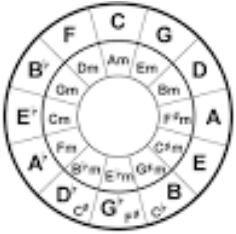Morning Has Broken, like the first morning - A beautiful old hymn, revived and made famous by Cat Stevens. Nice work on the melody. Below is a recording that Pat and I made of the Uke I and the chords so that YOU can practice the Uke II part. We'll warm up with this again next week. Remember that it is in the KEY of C so your B's on the G string are natural (4th fret).
After a warm up with Morning Has Broken, we then did some F scale of the exercises on page 31, followed by Au Clair de la lune. Both classes played this so effortlessly that you HAVE to feel good about that.
Next - the lower part of the F scale including Bb on the G string and then Long, Long Ago - very satisfying. We'll revisit this next week allowing those who want to try the Variation on page 35 a chance to play it.
Finally we talked about doing a group performance song for the BUG Jam on Dec 6. Let's try This Little Light of Mine in 4 parts - Key of G. We will assign parts next week so take a look at the score and think about which part you would like to play. We will need people to play the melody (Uke I) also. I will also make some recordings of all the parts for you to work with.
Practice for next week: Morning has Broken (especially Uke II), F scale Exercises on page 31 , Long, Long Ago (your choice of Uke I, Uke II or the variation), Donkey Riding (pg 36), and In The Bleak Midwinter (pg 37)
After a warm up with Morning Has Broken, we then did some F scale of the exercises on page 31, followed by Au Clair de la lune. Both classes played this so effortlessly that you HAVE to feel good about that.
Next - the lower part of the F scale including Bb on the G string and then Long, Long Ago - very satisfying. We'll revisit this next week allowing those who want to try the Variation on page 35 a chance to play it.
Finally we talked about doing a group performance song for the BUG Jam on Dec 6. Let's try This Little Light of Mine in 4 parts - Key of G. We will assign parts next week so take a look at the score and think about which part you would like to play. We will need people to play the melody (Uke I) also. I will also make some recordings of all the parts for you to work with.
Practice for next week: Morning has Broken (especially Uke II), F scale Exercises on page 31 , Long, Long Ago (your choice of Uke I, Uke II or the variation), Donkey Riding (pg 36), and In The Bleak Midwinter (pg 37)

 RSS Feed
RSS Feed